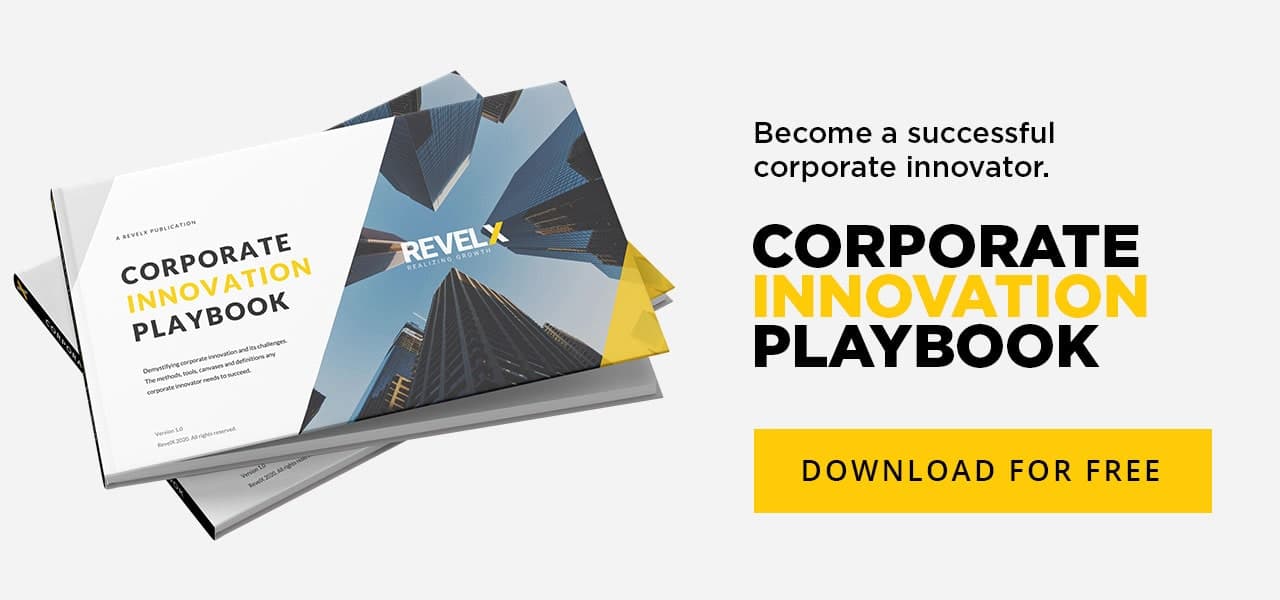Today I start our new blog series of CEO talks on innovation. Over the last year I interviewed many CEO’s of various international companies, large and small, grownups and scaleups in all sorts of industries. The leading question was always: “How do you organize your innovation most effectively?” The discussions were confidential, and content was often competitive and market sensitive. In order to get the most out of these interviews we have chosen to treat them anonymous. The results are short corporate stories. Honest and insightful. A great way to share knowledge and innovation experience.
An innovative culture
An interview with the CEO of a leading technology company on innovation.
One of my first interviews was with the CEO of a large multinational technology company. The company is active in various high-tech industrial sectors with security as a leading theme. The organization is headquartered in one of the leading European cities. Here is his story.
The biggest challenge?
Two days ago, we organized in Paris our annual innovation day, showing off over 50 innovations from everywhere in the company. A real candy store for our technicians and innovators. But at the same time, you could clearly see from what part of the company (even people) and country the ventures originated. The innovations were not driven from the market but from technology. A strength, but at the same time one of the biggest hurdles of our company. One that is rooted deeply into our company culture. And as a result, we have often extreme difficulty in bringing innovations successful to the market.
Technology push
Our company is habituated by very smart technicians. Technicians are often inside out focused and stubborn people. Our culture can be described as an engineering culture. If it is not about the content, the nuts and the bolts, people drop out of the discussion. Recently we started conversations about diversity and inclusiveness. Town hall sessions seemed the right way to start but didn’t resonate with our people. We did it wrong and behaved like a missionary. We were too much focused-on broadcasting.
Whereas we should have asked them what they want for themselves. And just simply bringing people together in a great atmosphere and office doesn’t cut it either. We have created in one of the hottest places in Europe a Digital Factory with 200 people inside. Everybody would like to work in that place. But how do we bring what’s happening over there to the other 50.000 people in our group? Let alone to our customers?
Culture and leadership, why is this so difficult?
In the Netherlands we appear to be the most progressive (something to do with the Dutch culture?). We completely set up for new ways of working. Built a new premises and campus site, with wide open structures and spaces that facilitate collaboration. It breathes communication. We also introduced new ways of working, with employee empowerment, less procedures and rules, more flexibility, top IT support and management in a more facilitating role. But the culture is still a blocking factor. The abandonment of management control seems to be hard to grasp by many international managers. The role of management might be changing from control to facilitate but that does not imply that you do not have an opinion on the output of your employees.
Management should focus on the output versus the input. The role of our senior management in this is crucial. If they do not take upon the proper role of coaching and constructive feedback, it just doesn’t work. The goals and targets need to be smart. But often the system gets corrupted by our own biases. It is always the same employees that score 120%.
Local and regional influences
Next to personal bias, in some country cultures like in France, favoritism is a widespread business practice. In the short run this could work fine, but in the long run it corrupts many business systems and is not sustainable. A lack of transparency, diversity and independency often frustrates innovation processes.
But despite its progressive national culture, the Dutch campus is not running as expected. The specific part in the Netherlands where it is rooted, does not have a good ecosystem for innovation. It is lacking the strength and power of some large driving corporates that could act as some sort of a flywheel for innovation. The local regional culture is very much focused on ‘do-it-yourself’ and is rather introvert. On top of that the region beholds a remarkable inferiority complex towards other strong surrounding economic regions. You have to look at culture in a more holistic fashion.
The current and the new
Trying to instill a new innovative culture is one of the hardest nuts to crack. And at the same time our current business is very much rooted in traditional values and business systems.
The current business (culture) is too a large extent determined by our large customers and contracts. E.g. our German customers are very conservative and traditional. If we want to push new innovations and other ways of working, we need to work on it way in advance of even a tender coming up in the market. Without influencing the tender requirements and processes, you are nowhere. Take a look at the new airport in Berlin that is still not open. Everything is ready for take-off, but in the tender, it is specified that the IT is not supposed to be older than 1 year, whereas the total acceptance procedure of the German state takes at least 2 years. This is the system that we are up against in many countries.
Agility?
Our innovation focuses on standard and new. In standard mode we look inside well-known territories. Mostly approached with a traditional sequential waterfall method. Innovation lead times are sometimes more then 10 years.
The new stuff is more research based. It is often undertaken in triple Helix foundations, focusing on new technology, materials and products. European subsidies play an important role and some leading customers are angel funders as well. Governments are strong stakeholders and also act as clients.
Customer inclusive
An important role plays the digitization of our hardware products. The biggest hurdle here is not our own engineers, but our customers. It is difficult to arouse some sort of a ‘Tesla feeling’ with them. Let alone the fact that they only trust what they are familiar with and are rewarded by their superiors on the basis of trusted and proven products. Their internal processes, systems and organizational structures are not suited for mingling Opex and Capex exchangeable solutions. TCO (total cost of ownership) and lifecycle thinking is, if any, only lip service in many discussions.
Anyway, AI and virtual reality gives us a lot of operational data from our customers with which we can improve the performance of our systems, make them more reliable, improve maintenance and prevent them from breaking down in operations. This by the way actually saves lives…
We already have an ‘as a service’ concept developed and is waiting on the shelf to be deployed. But it’s hard to get it sold. We therefore decided only to follow customer demand and where the money is. A good example is the English government that asked us to design a drone control system for urban territories. The system is designed in expectance of increased drone traffic in cities for last mile deliveries.
Organizing for demand
In reflection of the customers and their funding capabilities, our organizational competences follow suit and can be found in the same places of the organizational and international footprint of the company. AI for instance sits in North America, in which territory they find most of their business opportunities. But that is just a start.
It seems to me that winning companies seem to share knowledge universally, coming from one or more focused competence centers. And in addition to that, people need to think and work from the ‘outside-in’ combining a technology push with a (lateral) customer need. To strengthen this outside-in mentality, we often use external smart cookies to bring in new perspectives and expertise and advisors that dare to challenge us on our biases. You just cannot do it yourself anymore in these complex and turbulent times.
The ‘how to’ topic accrued out of the feedback that we got from readers of the book I have written on innovation with my esteemed colleague Matthijs Rosman called ‘DARE, The Mindset for Successful Innovators in the Digital Age’.
The purpose of the interviews is to create a new publication as the successor of DARE. Do you want to join the conversation? Feel free to contact me at eric@revelx.nl.
Eric de Groot
Boardroom strategist with unparalleled creative brainpower. Always focused on growth. Creates speed by combining business modeling with inventive pragmatic solutions. Invests in involvement over a sustained period.
Related posts
Step 1. Why every CEO should play the DisruptR game with their team
DisruptR Game for CEOs fosters strategic innovation. Learn…
June 22, 2025
Innovation governance: Why every CEO needs a Growth Board
Growth Board for CEOs is essential. Discover how this…
June 19, 2025
Why innovation belongs on the CEO agenda
Innovation on the CEO agenda is essential. Explore why…
June 16, 2025




